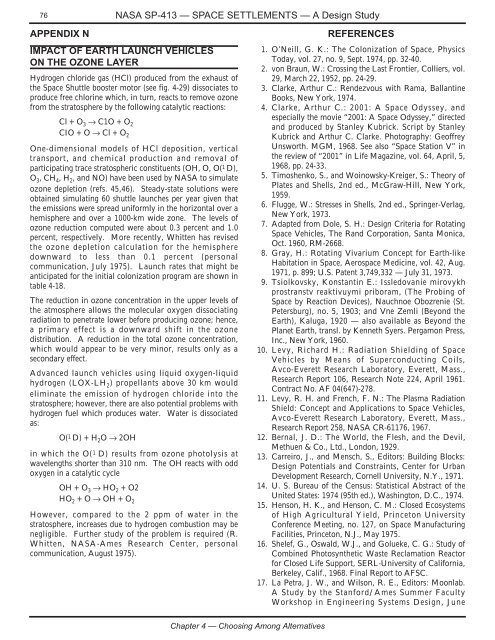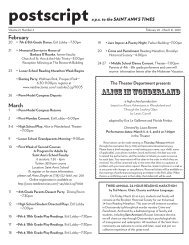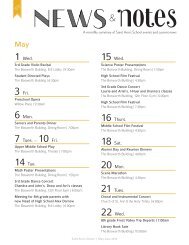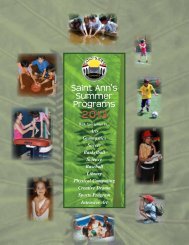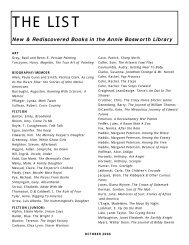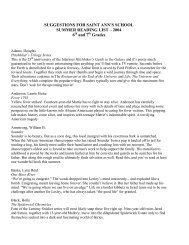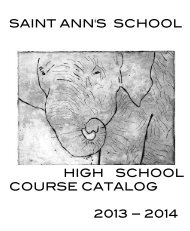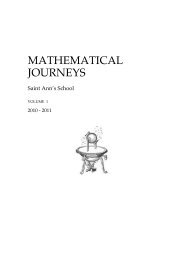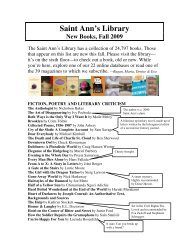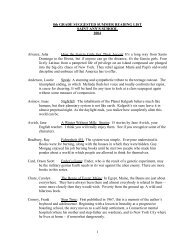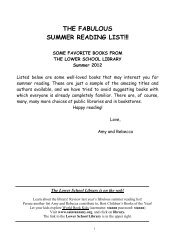NASA SP-413 Space Settlements - Saint Ann's School
NASA SP-413 Space Settlements - Saint Ann's School
NASA SP-413 Space Settlements - Saint Ann's School
Create successful ePaper yourself
Turn your PDF publications into a flip-book with our unique Google optimized e-Paper software.
76<br />
<strong>NASA</strong> <strong>SP</strong>-<strong>413</strong> — <strong>SP</strong>ACE SETTLEMENTS — A Design Study<br />
APPENDIX N<br />
IMPACT OF EARTH LAUNCH VEHICLES<br />
ON THE OZONE LAYER<br />
Hydrogen chloride gas (HCl) produced from the exhaust of<br />
the <strong>Space</strong> Shuttle booster motor (see fig. 4-29) dissociates to<br />
produce free chlorine which, in turn, reacts to remove ozone<br />
from the stratosphere by the following catalytic reactions:<br />
Cl + O 3 → C1O + O 2<br />
CIO + O → Cl + O 2<br />
One-dimensional models of HCl deposition, vertical<br />
transport, and chemical production and removal of<br />
participating trace stratospheric constituents (OH, O, O( 1 D),<br />
O 3 , CH 4 , H 2 , and NO) have been used by <strong>NASA</strong> to simulate<br />
ozone depletion (refs. 45,46). Steady-state solutions were<br />
obtained simulating 60 shuttle launches per year given that<br />
the emissions were spread uniformly in the horizontal over a<br />
hemisphere and over a 1000-km wide zone. The levels of<br />
ozone reduction computed were about 0.3 percent and 1.0<br />
percent, respectively. More recently, Whitten has revised<br />
the ozone depletion calculation for the hemisphere<br />
downward to less than 0.1 percent (personal<br />
communication, July 1975). Launch rates that might be<br />
anticipated for the initial colonization program are shown in<br />
table 4-18.<br />
The reduction in ozone concentration in the upper levels of<br />
the atmosphere allows the molecular oxygen dissociating<br />
radiation to penetrate lower before producing ozone; hence,<br />
a primary effect is a downward shift in the ozone<br />
distribution. A reduction in the total ozone concentration,<br />
which would appear to be very minor, results only as a<br />
secondary effect.<br />
Advanced launch vehicles using liquid oxygen-liquid<br />
hydrogen (LOX-LH 2 ) propellants above 30 km would<br />
eliminate the emission of hydrogen chloride into the<br />
stratosphere; however, there are also potential problems with<br />
hydrogen fuel which produces water. Water is dissociated<br />
as:<br />
O( 1 D) + H 2 O → 2OH<br />
in which the O( 1 D) results from ozone photolysis at<br />
wavelengths shorter than 310 nm. The OH reacts with odd<br />
oxygen in a catalytic cycle<br />
OH + O 3 → HO 2 + O2<br />
HO 2 + O → OH + O 2<br />
However, compared to the 2 ppm of water in the<br />
stratosphere, increases due to hydrogen combustion may be<br />
negligible. Further study of the problem is required (R.<br />
Whitten, <strong>NASA</strong>-Ames Research Center, personal<br />
communication, August 1975).<br />
REFERENCES<br />
1. O’Neill, G. K.: The Colonization of <strong>Space</strong>, Physics<br />
Today, vol. 27, no. 9, Sept. 1974, pp. 32-40.<br />
2. von Braun, W.: Crossing the Last Frontier, Colliers, vol.<br />
29, March 22, 1952, pp. 24-29.<br />
3. Clarke, Arthur C.: Rendezvous with Rama, Ballantine<br />
Books, New York, 1974.<br />
4. Clarke, Arthur C.: 2001: A <strong>Space</strong> Odyssey, and<br />
especially the movie “2001: A <strong>Space</strong> Odyssey,” directed<br />
and produced by Stanley Kubrick. Script by Stanley<br />
Kubrick and Arthur C. Clarke. Photography: Geoffrey<br />
Unsworth. MGM, 1968. See also “<strong>Space</strong> Station V” in<br />
the review of “2001” in Life Magazine, vol. 64, April, 5,<br />
1968, pp. 24-33.<br />
5. Timoshenko, S., and Woinowsky-Kreiger, S.: Theory of<br />
Plates and Shells, 2nd ed., McGraw-Hill, New York,<br />
1959.<br />
6. Flugge, W.: Stresses in Shells, 2nd ed., Springer-Verlag,<br />
New York, 1973.<br />
7. Adapted from Dole, S. H.: Design Criteria for Rotating<br />
<strong>Space</strong> Vehicles, The Rand Corporation, Santa Monica,<br />
Oct. 1960, RM-2668.<br />
8. Gray, H.: Rotating Vivarium Concept for Earth-like<br />
Habitation in <strong>Space</strong>, Aerospace Medicine, vol. 42, Aug.<br />
1971, p. 899; U.S. Patent 3,749,332 — July 31, 1973.<br />
9. Tsiolkovsky, Konstantin E.: Issledovanie mirovykh<br />
prostranstv reaktivuymi priboram, (The Probing of<br />
<strong>Space</strong> by Reaction Devices), Nauchnoe Obozrenie (St.<br />
Petersburg), no. 5, 1903; and Vne Zemli (Beyond the<br />
Earth), Kaluga, 1920 — also available as Beyond the<br />
Planet Earth, transl. by Kenneth Syers. Pergamon Press,<br />
Inc., New York, 1960.<br />
10. Levy, Richard H.: Radiation Shielding of <strong>Space</strong><br />
Vehicles by Means of Superconducting Coils,<br />
Avco-Everett Research Laboratory, Everett, Mass.,<br />
Research Report 106, Research Note 224, April 1961.<br />
Contract No. AF 04(647)-278.<br />
11. Levy, R. H. and French, F. N.: The Plasma Radiation<br />
Shield: Concept and Applications to <strong>Space</strong> Vehicles,<br />
Avco-Everett Research Laboratory, Everett, Mass.,<br />
Research Report 258, <strong>NASA</strong> CR-61176, 1967.<br />
12. Bernal, J. D.: The World, the Flesh, and the Devil,<br />
Methuen & Co., Ltd., London, 1929.<br />
13. Carreiro, J., and Mensch, S., Editors: Building Blocks:<br />
Design Potentials and Constraints, Center for Urban<br />
Development Research, Cornell University, N.Y., 1971.<br />
14. U. S. Bureau of the Census: Statistical Abstract of the<br />
United States: 1974 (95th ed.), Washington, D.C., 1974.<br />
15. Henson, H. K., and Henson, C. M.: Closed Ecosystems<br />
of High Agricultural Yield, Princeton University<br />
Conference Meeting, no. 127, on <strong>Space</strong> Manufacturing<br />
Facilities, Princeton, N.J., May 1975.<br />
16. Shelef, G., Oswald, W.J., and Golueke, C. G.: Study of<br />
Combined Photosynthetic Waste Reclamation Reactor<br />
for Closed Life Support, SERL-University of California,<br />
Berkeley, Calif., 1968. Final Report to AFSC.<br />
17. La Petra, J. W., and Wilson, R. E., Editors: Moonlab.<br />
A Study by the Stanford/Ames Summer Faculty<br />
Workshop in Engineering Systems Design, June<br />
Chapter 4 — Choosing Among Alternatives


